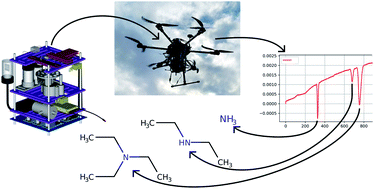Complete capillary electrophoresis process on a drone: towards a flying micro-lab†
Abstract
Hazardous remote places exist in the world. Why should health or life be risked sending a scientist to the investigation site, as the remote analytical instrumentation exists? Different scientific fields require instruments that could be used on-site (in situ), therefore the purpose of this work was to design a fully automated chemical analysis system small enough to be mountable on a drone. Here we show an autonomous analytical system with sampling capability on a drone. The system is suited for the remote and autonomous analysis of volatile and non-volatile chemicals in the air. The designed system weighs less than 800 g. Data are transmitted wirelessly. Collected substances are separated automatically without the intervention of the operator using the method of capillary zone electrophoresis. The analytes are detected using a miniaturized contactless conductivity detector quantifying them down to less than 1 μM. In this work, we demonstrated sampling and separation of volatile amines (triethylamine and diethylamine) and organic acids (acetic and formic acids), non-volatile inorganic cations (K+, Ca2+, Na+), and protein (bovine serum albumin) in the aerosol state. It was shown that the capillary electrophoretic analysis can be performed on a hovering drone. We anticipate our work to be a starting point for more sophisticated, autonomous complex sample analysis. We believe that our designed instrument will enable the investigation of hazardous places in different research fields.



 Please wait while we load your content...
Please wait while we load your content...